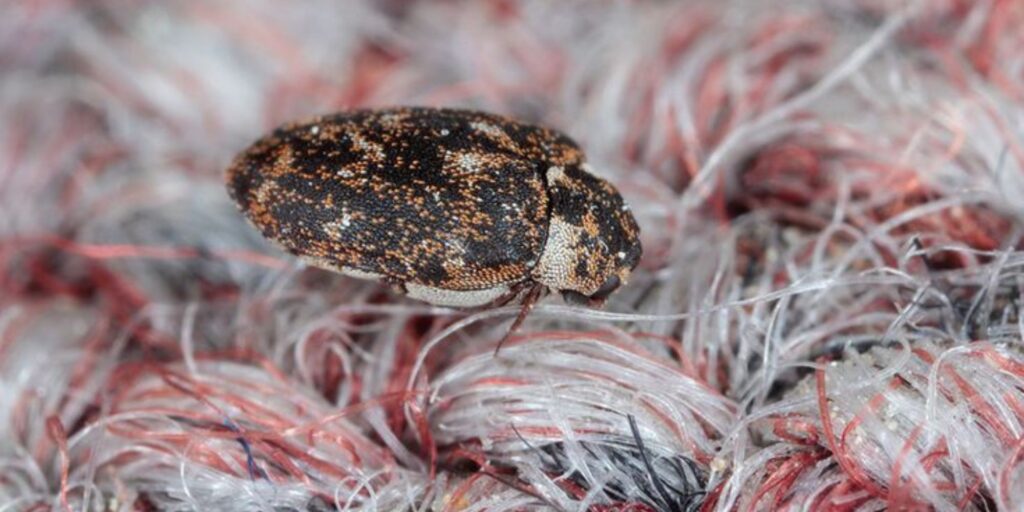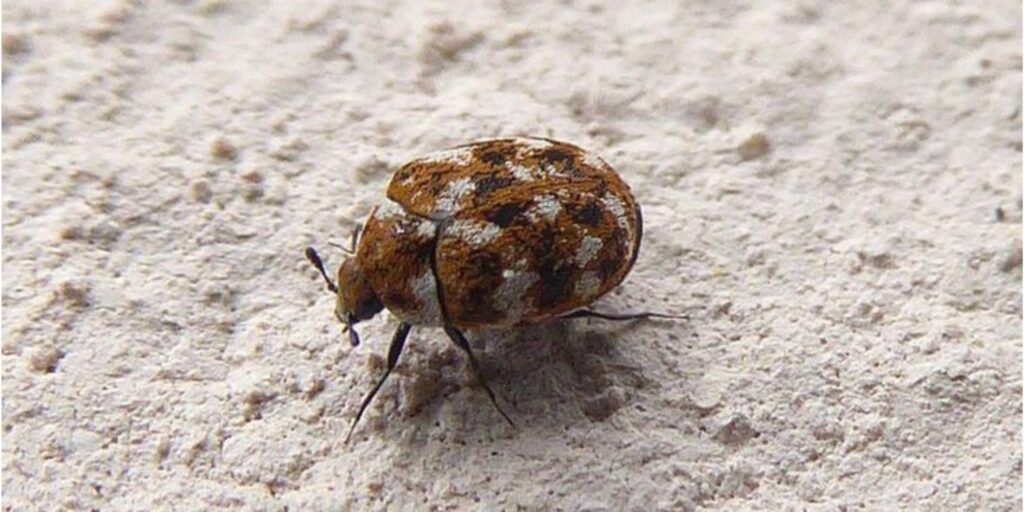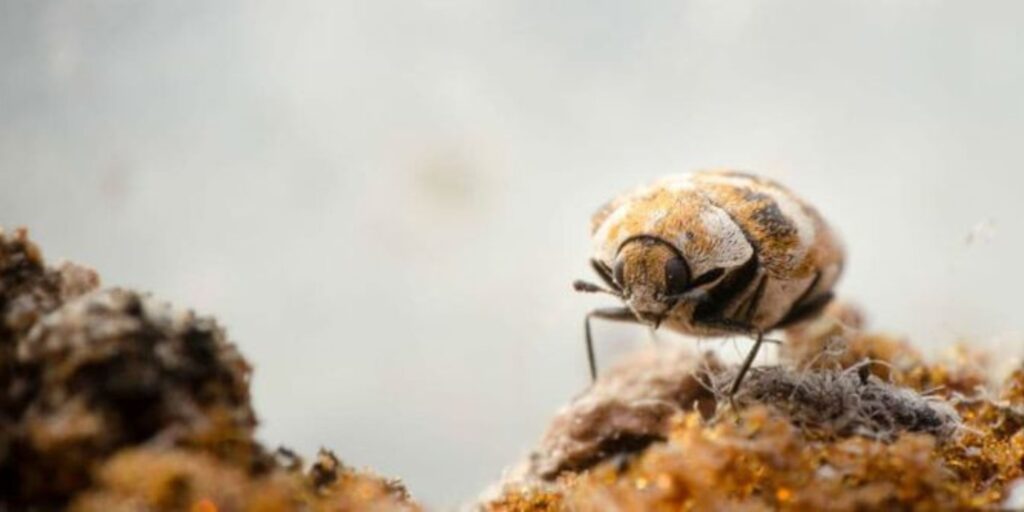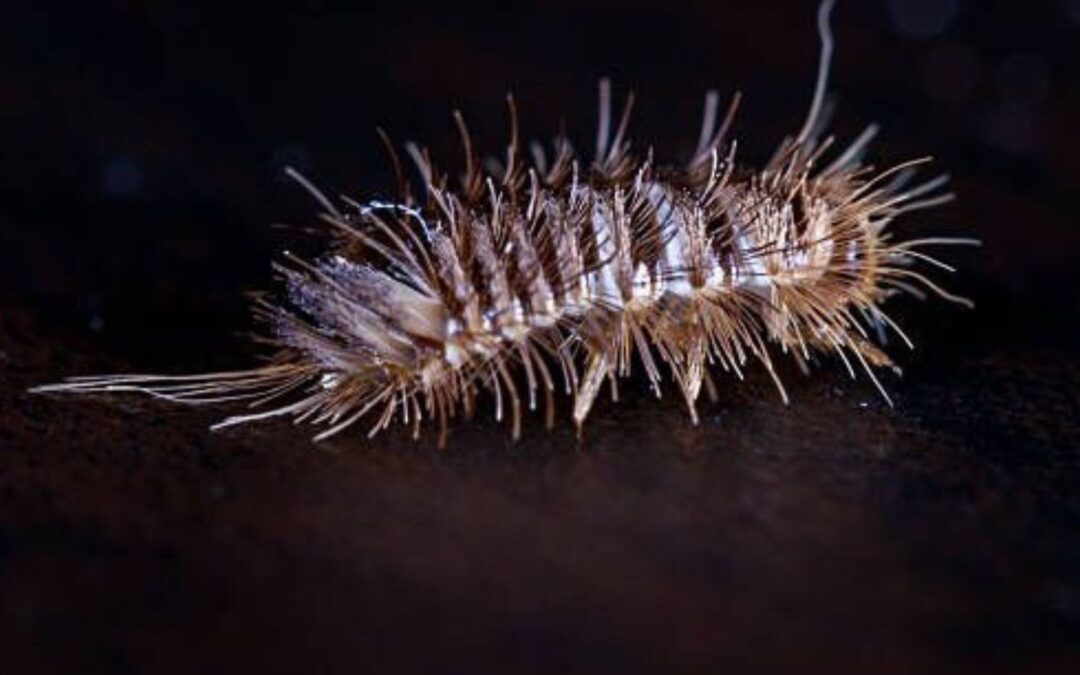Have you ever noticed small holes in your clothes or mysterious patches on your carpets? If so, you might be dealing with an unwelcome guest: the carpet beetle. These tiny pests are more than just a nuisance; they can cause significant damage to your belongings. Understanding the carpet beetle life cycle is essential for effective prevention and control. From their unassuming eggs to their adult forms, each stage plays a crucial role in how these insects invade our homes. Let’s dive into the fascinating world of carpet beetles and uncover what makes them tick!
Understanding the Carpet Beetle Life Cycle: From Egg to Adult
The carpet beetle life cycle consists of four stages: egg, larva, pupa, and adult. This journey begins when a female lays eggs in hidden areas with abundant food sources. These eggs hatch into larvae within a week or two.
Larvae are the most destructive stage, feeding on natural carpets, clothing, and upholstery fibers. Their appetite can lead to significant damage if left unchecked. After several weeks of feeding and growing, the larvae enter the pupal stage.
During this time, they transform into adults while nestled away from light and potential threats. Once fully developed, adult carpet beetles emerge to continue their life cycle by mating and laying new eggs, perpetuating the nuisance for homeowners everywhere.
Carpet Beetle Life Cycle Stages

The carpet beetle life cycle consists of four stages: egg, larva, pupa, and adult. Each stage plays a crucial role in the development of these pests. Understanding these stages can help you identify an infestation early.
Eggs are tiny and often laid in hidden areas like carpets or upholstery. A female carpet beetle can lay up to 100 eggs at once. Once hatched, the larvae emerge with a ravenous appetite for organic materials.
Larvae are the most destructive stage, feeding on animal products and natural fibers. After several weeks of feeding and growing, they enter the pupal stage before becoming adults. This transformation completes their life cycle and prepares them for mating and reproduction.
Carpet Beetle Life Cycle: Carpet Beetle Life Cycle Explained
The carpet beetle life cycle consists of four main stages: egg, larva, pupa, and adult. The journey begins when a female lays eggs in hidden spots like carpets or furniture. These tiny eggs are hard to spot but can lead to significant issues.
Once the eggs hatch, the larvae emerge. This stage is crucial as they feed on natural fibers found in textiles and other organic materials. Due to their size and color variations, they often go unnoticed.
After several weeks of feeding, the larvae become pupae within a protective shell. This phase lasts for about two weeks before adults finally emerge. Each stage plays a vital role in the survival and reproduction of these pests while posing challenges for homeowners dealing with infestations.
Carpet Beetle Life Cycle: Identification and Appearance
Carpet beetles are small, oval-shaped insects ranging from 1/8 to 1/4 inch long. Their colors can range from black, brown, or yellow to orange and even a mix of these shades. One of the most distinctive features is their varied patterns, which often include unique scales.
Adult carpet beetles have smooth bodies with short hairs that give them a velvety appearance. These pests typically go unnoticed because they can blend into surroundings like rugs or upholstery.
Larvae are more noticeable and resemble tiny fuzzy caterpillars. They are elongated with bristly hairs covering their bodies and are usually found near food sources such as fabric or stored products. Recognizing these differences can help you take action before an infestation escalates.
Carpet Beetle Life Cycle: Feeding Habits and Diet

Carpet beetles are notorious for their diverse feeding habits. They primarily feed on natural fibers like wool, silk, and cotton. This diet makes them a common nuisance in homes with carpets or upholstery crafted from these materials.
In addition to textiles, carpet beetles consume organic debris such as hair, skin flakes, and even pollen. Their larvae are particularly voracious eaters and can cause significant damage to clothing and furnishings if left unchecked.
Adult carpet beetles tend to have different dietary preferences. They mainly subsist on nectar and pollen found in flowers. This shift allows adults to contribute positively to the ecosystem by aiding in pollination while posing a threat during their larval stage at home.
Habitat and Nesting Preferences
Carpet beetles are commonly found in homes, favoring warm environments where they can thrive. They often gravitate towards areas rich in organic materials like wool, feathers, and even pet hair, making closets, attics, and carpets prime locations for infestations.
These pests nest in hidden spots—behind furniture or under floorboards. They seek out dark places that provide safety from predators and harsh conditions. Natural fibers offer both sustenance and shelter.
Adult carpet beetles may inhabit gardens or feed on flower pollen outside the home. This outdoor habitat allows them to breed before migrating indoors, where they seek warmth during colder months. Understanding their nesting preferences is key to preventing infestations inside your living space.
Identifying Carpet Beetle Damage
Carpet beetles are particularly known for the damage they cause to fabrics and natural materials. Signs of damage typically include irregular, round holes in wool rugs, clothing, and upholstered furniture. These beetles favor feeding on fibers such as wool, silk, fur, feathers, and even certain synthetic fabrics when these materials contain traces of natural oils or proteins. Keeping an eye out for these types of damages will help you identify an infestation early and prevent further destruction of valuable items.
The Larvae Stage: Destructive and Difficult to Spot
The carpet beetle’s larvae stage is the most damaging, as they feed on organic materials like clothing, carpets, and bedding. Carpet beetle larvae are often hard to spot because they blend in with their surroundings, usually hiding in crevices, under furniture, or behind stored items. Their small, cylindrical bodies are covered with bristles, and they can range in color from light brown to yellowish-white. While they feed, they leave behind fecal pellets and shed skins, which are clear indicators of their presence.
Spotting Adult Carpet Beetles
Adult carpet beetles are usually small, round, and black or brown with yellow or white scales or patterns on their backs. They are often mistaken for other types of beetles or small insects. They are most commonly seen during spring and summer, as they fly toward light sources like windows and lamps. While they do not cause damage directly, their presence is a key sign that an infestation may be present. Seeing adults around your home should prompt an inspection of eggs and larvae in hidden areas.
The Pupal Stage: Preparing for the Next Generation
The pupal stage of the carpet beetle marks a period of transformation. After larvae have fed sufficiently, they spin a cocoon and enter the pupal phase. Inside the cocoon, the larvae change into adult beetles. This stage can last from several weeks to a few months, depending on environmental conditions. While the pupal stage itself doesn’t cause direct damage, it’s important to be aware of this phase when inspecting your home. The presence of cocoons can help you gauge the stage of the infestation and take action accordingly.
How to Prevent Carpet Beetle Infestations
Prevention is key to avoiding carpet beetle infestations. Start by keeping your home clean and regularly vacuuming areas where these pests are likely to hide, such as beneath furniture, along baseboards, and in storage areas. Pay special attention to natural fabrics like wool, which are prime targets for carpet beetles. Storing clothing and fabrics in airtight containers can also protect them from damage. If you have a persistent problem, using insecticides designed for carpet beetles or seeking professional pest control assistance may be necessary.
The Importance of Regular Inspections
Regular inspections are essential in preventing carpet beetle infestations from becoming a major issue. Check your stored items, particularly clothing, blankets, and rugs, for signs of damage or beetle activity. Don’t forget to inspect the hidden areas of your home, such as attics, basements, and closets, where carpet beetles may be nesting. Catching an infestation early can save you time, effort, and money by preventing widespread damage to fabrics and belongings.
Natural Ways to Control Carpet Beetles
If you prefer to take a natural approach to carpet beetle control, there are several eco-friendly methods you can try. Diatomaceous earth is a popular natural pest control solution, as it dehydrates and kills the beetles without the use of toxic chemicals. Essential oils like lavender, eucalyptus, and cedarwood are also known to repel carpet beetles and other pests. Spraying a diluted mixture of essential oils around your home or placing sachets of dried herbs in your storage areas can help deter these pests from settling in.
When to Seek Professional Help for Carpet Beetles

If your carpet beetle infestation is out of control or has spread to several areas of your home, it may be time to seek professional pest control services. Professionals have the expertise and tools to thoroughly inspect your home, identify the source of the infestation, and treat the problem effectively. They can also recommend long-term prevention strategies to ensure that carpet beetles don’t return. With the right treatment, you can protect your home and belongings from the damage caused by these persistent pests.
In conclusion, early detection of carpet beetles, coupled with timely intervention and prevention measures, can prevent costly damage to fabrics and stored goods. By understanding their life cycle and being vigilant about signs of infestation, you can keep your home beetle-free and preserve the integrity of your possessions.

